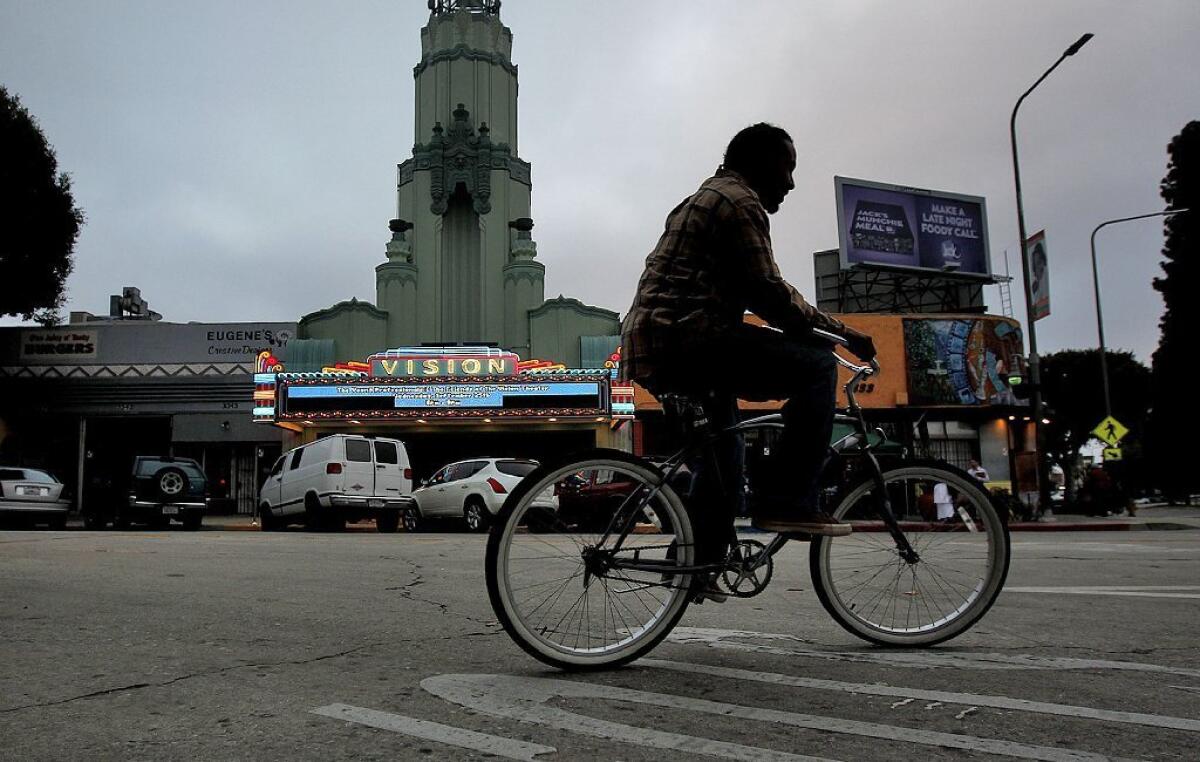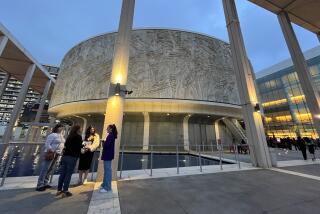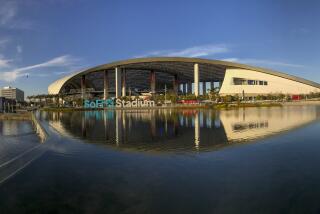Play festival heralds impending revival of L.A.’s Vision Theatre

A decade and a half has passed since Los Angeles city officials first resolved to renovate and reinvigorate the Vaudeville-era Vision Theatre as an arts hub for Leimert Park, itself a historic hub of black culture in L.A.’s Crenshaw District.
To show that the long-envisioned new beginning is finally in sight after a long and, at $23 million, expensive gestation, the city’s Department of Cultural Affairs and three neighboring private arts venues are staging a weekend-long festival of play readings intended as an early glimpse of bigger things to come.
The festival fits into the big picture of turning Leimert Park into a cultural destination with the 750-seat Vision Theatre as its marquee attraction, said James V. Burks, whose job as special projects director for the Department of Cultural Affairs includes managing the theater.
The city began eyeing a purchase of the theater in 1998 and bought it two years later. An initial $6.3-million renovation phase has updated its utilities, Burks said, installed an elevator to provide access to a youth arts center that’s been carved out on the second floor, and restored the lobby and distinctive marquee to their 1930-vintage appearance.
The lobby has been used as a makeshift performance and events space over the past 18 months, Burks said. Still to come is an overhauling of the auditorium and an expansion of the backstage area and other production facilities. He expects the remaining work to begin next spring, with a full opening in the fall of 2016.
Fourteen theater companies have come together for play readings that began with a single performance Thursday, continue with two readings Friday evening and climax with 11 more script-in-hand performances during afternoon and evening sessions Saturday and Sunday. Burks hopes to give a taste of what’s ahead for the Vision and the arts neighborhood it anchors.
Admission is $15 for each reading, or $25 for an all-day pass, with $5 discounts for seniors and students.
Readings are being held in the Vision lobby as well as the smaller Barbara Morrison Performing Arts Center and Fernando Pullum Community Arts Center, and the mid-sized Regency West.
It’s billed as the first annual Leimert Park Village Theatre Festival, and Burks dreams of it becoming a national event to celebrate black theater.
The introductory festival’s aim, according to the cultural affairs department’s announcement, is “to position Leimert Park Village as the center for theater in South Los Angeles” and to begin showing dividends on the city’s investment in the venue in hopes of invigorating the neighborhood as “a booming commercial and artistic hub.”
The participating companies range from one of the heavyweights of Southern California theater, the Pasadena Playhouse, which presents “The Black Man of Happiness” by Peter Harris on Sunday afternoon, to the Watts Village Theatre Company, which has operated on shoestring budgets since 1996. It’s offering “Hollywood in the Hood” on Friday evening, written by company cofounder and artistic director Lynn Manning.
Other performances include “Paul Robeson in Berlin,” by Robert Coles and Bartley McSwine, from the downtown-based Robey Theatre Company (Sunday afternoon), the Bilingual Foundation of the Arts’ reading of Sebastian Juyet’s “A House Dismantled” (Saturday evening), and “In the Blink of an Eye” (Friday), directed and cowritten for Master Peace Theater Players by Obba Babatunde, whose Broadway acting credits include a Tony-nominated turn in the original cast of “Dreamgirls.”
The finale on Sunday evening has been reserved for Marla Gibbs, who is being honored for having kept the Vision Theatre going as its owner-operator from 1990 to 1997. As she lost the theater to foreclosure, Gibbs told the Los Angeles Times that she’d poured $2.5 million into the effort. “I had a vision and I just wasn’t able to complete it,” she said at the time. “This is a sore, an open sore.”
But after Gibbs lost the building, then-City Councilman Mark Ridley-Thomas led the city’s effort to buy and renovate it.
Gibbs, who starred as a wisecracking maid in the long-running ‘70s and ‘80s sitcom “The Jeffersons,” is producing a reading of Ron Milner’s comedy “Checkmates” under the auspices of the Crossroads Arts Academy, an education program she had established at the Vision.
The Vision Theatre is the last component in a piecemeal, ad-hoc but multimillion-dollar effort by city government in the 1990s and early 2000s to acquire, renovate and revive worn out old theaters on the theory that the arts can drive a neighborhood’s economic development.
Other examples are the Madrid Theatre in Canoga Park, the Warner Grand in San Pedro and the Nate Holden Performing Arts Center in Mid-City -- built after the city bought and demolished the Holden’s privately owned precursor, the Ebony Showcase Theater.
City funding also was crucial to arts-driven redevelopment in North Hollywood, starting in the late 1980s with the El Portal Theatre and continuing in the ‘90s with the conversion of an unused city-owned building into the Lankershim Arts Center.
The granddaddy of these efforts is the downtown Los Angeles Theatre Center, whose difficulties during its early days in the mid-’80s to early-’90s cost the city millions of dollars. Undiscouraged, L.A. officials plugged forward with subsequent theater-centered economic development projects in other neighborhoods -- albeit more modest ones than LATC.
It’s a tactic not likely to be repeated soon, given more straitened city finances since the Great Recession, compounded by Gov. Jerry Brown’s successful effort in 2011 to abolish California’s municipal redevelopment agencies and divert much of their funding to the state. L.A.’s Community Redevelopment Agency had invested heavily in arts projects, using required arts and culture fees from private developers to build major venues such as the Museum of Contemporary Art’s Grand Avenue building, the Dolby Theatre in Hollywood and the Grammy Museum at L.A. Live.
Follow @boehmm for arts news and features
More to Read
The biggest entertainment stories
Get our big stories about Hollywood, film, television, music, arts, culture and more right in your inbox as soon as they publish.
You may occasionally receive promotional content from the Los Angeles Times.







